 | James Bates Thomson - Arithmetic - 1847 - 434 pages
...140 160 180 200 220 240 260 280 300 320 340 360 380 400 Multiplying ~by any whole number, is, talcing the multiplicand as many times, as there are units in the multiplier. The application of this principle to fractional multipliers will be illustrated under fractions. OBS.... | |
 | James Bates Thomson - Arithmetic - 1848 - 434 pages
...124 MULTIPLICATION OP [SECT. VII. MULTIPLICATION OP FRACTIONS. 209. We have seen that multiplying by a whole number, is taking the multiplicand as many times as there are units in the multiplier. (Art. 82.) On the other hand. If the multiplier is only a part of a unit, it is plain we must take... | |
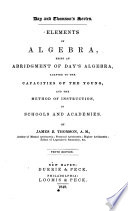 | Jeremiah Day, James Bates Thomson - Algebra - 1848 - 264 pages
...factors, in multiplication, is always to be considered as a number. The operation consists in repeating the multiplicand as many times as there are units in the multiplier. How then can a line, a surface, or a solid, become a multiplier 1 ' To explain this it will be necessary... | |
 | Dana Pond Colburn, George Augustus Walton - Arithmetic - 1849 - 110 pages
...product in multiplication may be regarded as a number representing the sum which would result from taking the multiplicand as many times as there are units in the multiplier. By division we can determine two distinct things ; first, into how many parts of a given size a given... | |
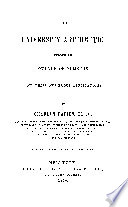 | Charles Davies - Arithmetic - 1850 - 412 pages
...denoting how many times the multiplicand is to be taken, is called the multiplier. The number arising from taking the multiplicand as many times as there are units in the multiplier, is called the product. The multiplicand and multiplier, together, are called factors, or producers... | |
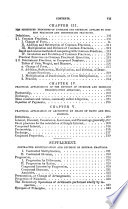 | Thomas H. Palmer - Arithmetic - 1854 - 368 pages
...multiplying by •£ or by 5)5, &c., really is division. For multiplication, it will be remembered, is taking the multiplicand as many times as there are units in the multiplier. Exercises for the Slate and Black-board. 1. What will 7 yds. 3 qr. 2 na. of cloth come to, at £2 2s.... | |
 | Thomas H. Palmer - Arithmetic - 1854 - 356 pages
...effect, multiplying by i or by ^V, &c., really is division. For multiplication, it will be remembered, is taking the multiplicand as many times as there are units in the multiplier. . Exercises for the Slate and Black-board. 1. What will 7 yds. 3 qr. 2 na. of cloth come to, at £2... | |
 | James Bates Thomson - Arithmetic - 1854 - 106 pages
...? Ans. Take the multiplicand twice. Thus, 4X2 = 8. 3. How multiply by any whole number ? Ans. TAKE the multiplicand as many times as there are units in the multiplier. 4. Hoqr then do you multiply by 1 half? Ans. Take 1 halflhe multiplicand once. Thus, 6 X 4=3. 5. How... | |
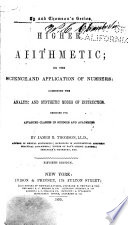 | James Bates Thomson - Arithmetic - 1855 - 436 pages
...wbcle nunitw 1 MULTIPLICATION OF FRACTIONS. 2O 9. We have seen that multiplying by a whole nuniber, a taking the multiplicand as many times as there are units in the multiplier. (Art. 82.) On the other hand, If the multiplier is only a part of a unit, it is plain we musi take... | |
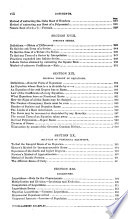 | Elias Loomis - Algebra - 1855 - 356 pages
...take Qax'— 2amn + 3by'1 — 4m. Ans. SECTION IV. MULTIPLICATION. (48.) Multiplication is repeating the multiplicand as many times as there are units in the multiplier. When several quantities are to be multiplied together, the result will be the same in whatever order... | |
| |